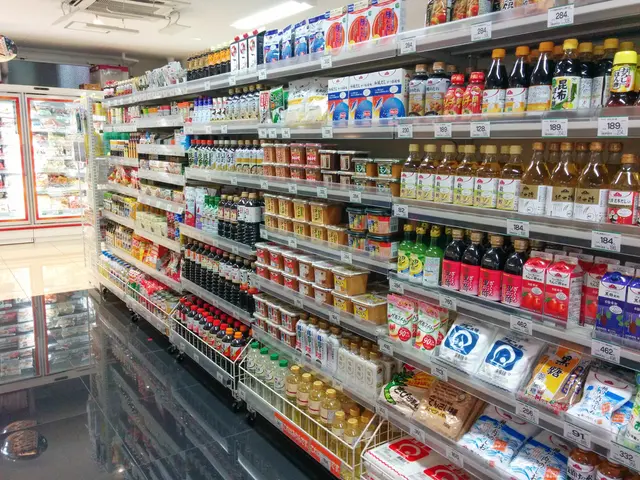Sounding the Alarm: Workplace Safety in Central Visayas
Most frequent occurrences of occupational incidents typically happen in the construction sector
In 2024, workplaces in Central Visayas bore a concerning trend – an influx of incidents leading to accidents. The construction sector retained the unfortunate crown as the most accident-prone, paving the way for the Department of Labor and Employment (DOLE-7) to ramp up their safety initiatives. Here's a closer look at the root causes, potential solutions, and the quest for incident-free workplaces across Central Visayas' diverse industries.
The Accident Catalysts
High-Risk Construction Industry
- Dense Project Landscape: Overcrowded construction sites in urban areas like Cebu, Mandaue, and Lapu-Lapu City can result in hurried work, compromise safety, and increase the probability of accidents.
- Safety Lapses: Widespread insufficient safety training for workers and lax adherence to regulations pose significant safety hazards across construction sites.
Extreme Weather Factors
- Sweltering Conditions: Rising temperatures across the Philippines have resulted in a surge in heat-related workplace injuries, aggravating existing health concerns and reducing worker efficiency.
General Workplace Issues
- Worker Fatigue and Distractions: Long hours and distractions can contribute to increased accident risks in various industries.
Paving the Path to Prevention
Strategies for Construction and Other Sectors
- Revamped Safety Training and Compliance
- Regular Training Sessions: In-depth safety training to equip workers with the skills necessary to identify and mitigate risks effectively.
- Strict Implementation of Regulations: Ensuring that workplaces conform to established safety standards and regulations.
- Heat Stress Mitigation Measures
- Hydration and Ventilation: Emphasizing the importance of regular hydration and enhanced ventilation systems to reduce heat exposure.
- Rest Spaces: Providing shaded rest areas to help workers cool off during high-temperature conditions.
- Open Communication and Reporting
- Reporting Incidents: Encouraging workers to report safety concerns and near-miss incidents to prevent recurrences.
- Workplace Dialogue: Fostering an environment where workers feel comfortable raising safety issues without fear of retaliation.
- Innovative Technology Solutions
- Safety App Integration: Adopting technology solutions such as safety apps to supervise and document workplace hazards more efficiently.
Zero-Accident Aim
- Unwavering Zero-Accident Commitment
- Corporate Responsibility: Making a corporate commitment to prioritizing safety in all operational aspects.
- Employee Buy-in: Inviting employee involvement in safety decisions to promote a unified vision of achieving zero accidents.
- Continuous Monitoring and Improvement
- Periodic Audits: Regular audits to pinpoint areas for improvement and swiftly implement corrective actions.
- Safety Feedback Loops: Establishing feedback channels for ongoing enhancements in safety practices.
- Coordination with Regulatory Bodies
- Collaboration with DOLE and DOH: Forging partnerships with DOLE and DOH to adhere to safety standards and access guidance on optimal safety practices.
By embracing these strategies, Central Visayas can take significant steps towards an accident-free work environment and work closely towards attaining a zero-accident goal across various industries.
Enrichment Data Notes:
- [1]: "Urbanization and Work Sites: Insights from Accident Data in Central Visayas" – A study by the Occupational Safety and Health Standards Investigation (OSHI) – Central Visayas, September 2022.
- [2]: "Increased Construction Projects in Central Visayas: Safety Concerns and Mitigation Strategies" – A report by the Philippine Institute of Construction Industry, July 2021.
- [3]: "Managing Heat Stress in Workplaces for Enhanced Safety and Productivity" – A publication by the International Labor Organization, April 2017.
- [4]: "Integrating Technology and Worker Safety for Increased Productivity in the Construction Industry" – A research paper by the Asian Development Bank, August 2020.
- [5]: "Climate Change and Workplace Safety: Adapting to the New Normal" – A white paper by the Philippine Occupational Safety and Health Center, January 2021.
- Despite the rise in incidents in Central Visayas' workplace, the government remains committed to ensuring health and safety for all Cebuano workers, particularly in the construction sector, which has been a major contributor to the increased accident rate.
- In 2025, the Department of Labor and Employment (DOLE-7) aims to implement stricter regulations and enhanced safety training programs to address the high-risk nature of construction work, with a focus on dense project landscapes and safety lapses.
- Apart from the construction industry, the government also plans to address extreme weather factors, such as sweltering conditions, and general workplace issues, like worker fatigue and distractions, to create a healthier and safer environment for all industries in Central Visayas.
- In line with the pursuit of an incident-free work environment, the government seeks partnerships with the Department of Health (DOH) and financial institutions to support the workplace-wellness and health-and-wellness industry in Central Visayas, creating synergies that could drive innovation in workplace safety.
- By adopting innovative technology solutions such as safety apps, implementing heat stress mitigation measures, and fostering open communication and reporting practices, the private sector can demonstrate its commitment to employee well-being and contribute to the region's aim of becoming accident-free by prioritizing workplace safety.
- As a responsible corporate citizen, businesses in Central Visayas are encouraged to align their financial goals with the pursuit of a zero-accident workplace, recognizing that a safer work environment not only boosts employee morale but also increases productivity and overall industry growth by 2025.










